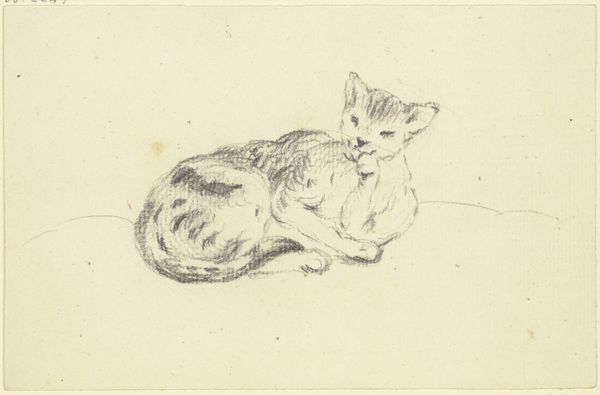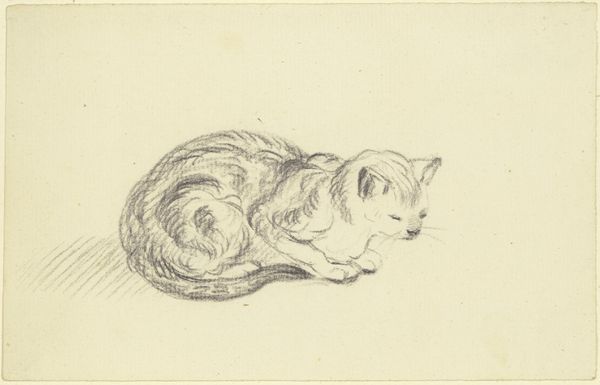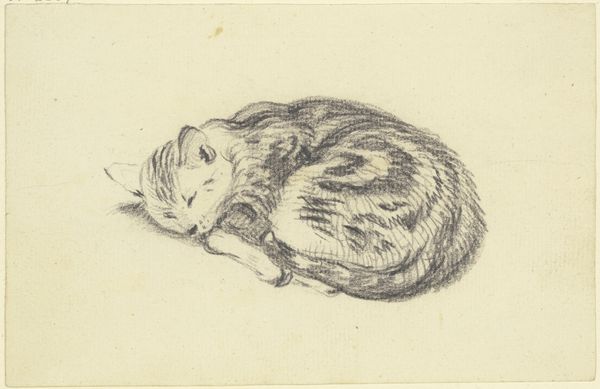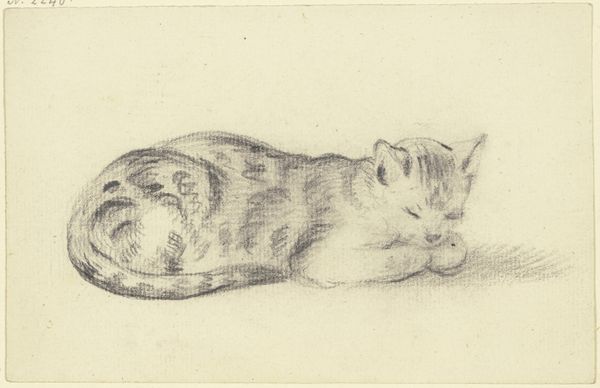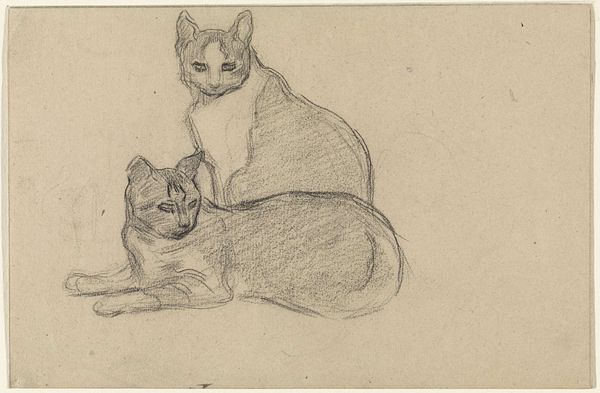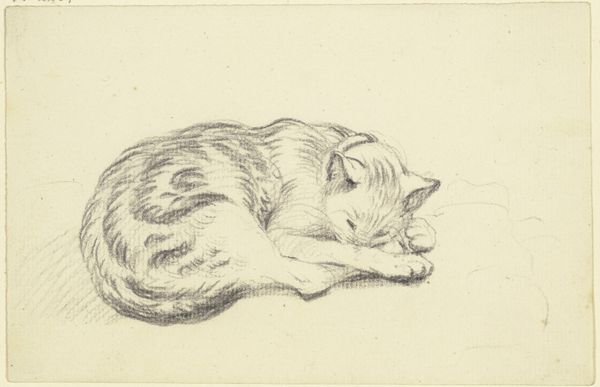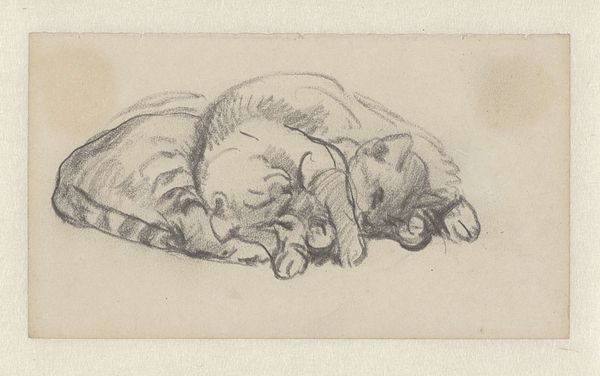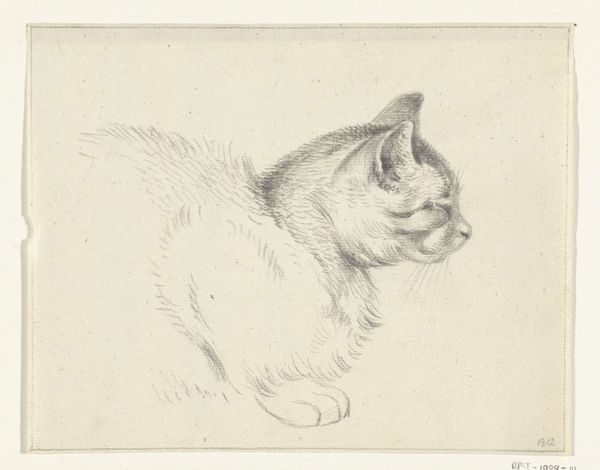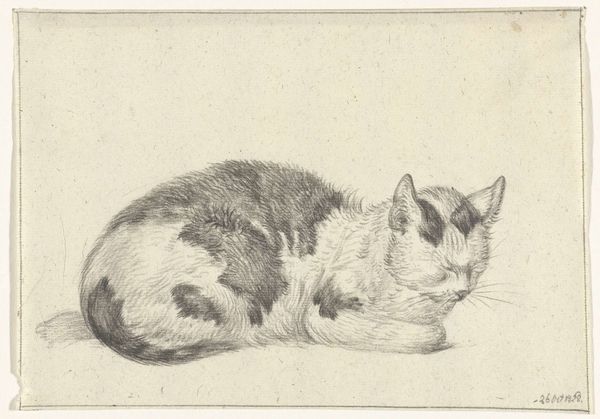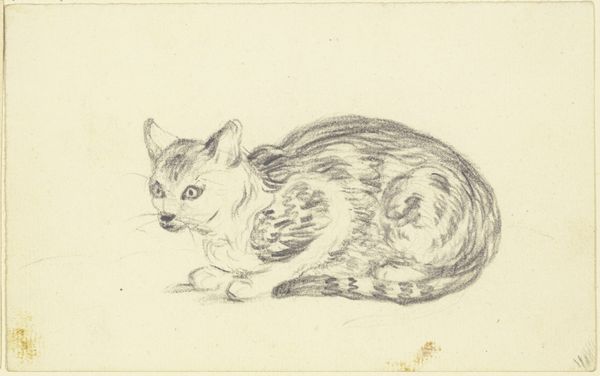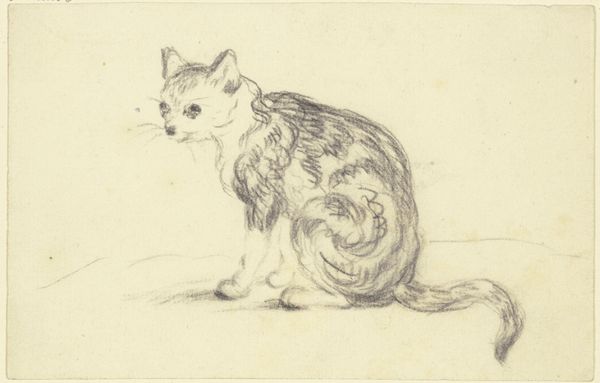
drawing, pencil, chalk
#
portrait
#
drawing
#
figuration
#
pencil
#
chalk
Copyright: Public Domain
Curator: Here at the Städel Museum, we have a simple yet elegant drawing titled "Lying Cat," created using pencil and chalk. It’s attributed to Friedrich Wilhelm Hirt. Editor: It's a quick study, isn’t it? The cat is curled up so compactly, it conveys a sense of complete vulnerability and trust. Look at how lightly the lines define its form! Curator: It is a very immediate and intimate work. These rapid sketches were common in the artistic practice of the period. Artists often captured quick studies from life around the studio as a warm up exercise or exploring a concept for later work. It offers insight into the creative process. Editor: You're right, it definitely feels like a raw sketch, something he captured spontaneously. I'm particularly drawn to the textural quality he achieved using what looks like chalk for shading on the cat's back. You can almost feel the softness of its fur. I would guess this quick study was not commissioned but produced through the act of observation by the artist’s hand and eye in his personal studio practice. Curator: I find the historical context quite interesting. Cats, even domestic ones, became popular subjects for portraiture around the late 18th- early 19th century reflecting societal changes where sentimentality and personal connection were emerging artistic concerns. They transitioned in artwork away from symbolic representations of liberty to actual domesticated, companionate house cats, and as such were an aspirational commodity among a emerging wealthy European merchant class. Editor: I’m stuck on the labor aspect - the artist's hand physically coaxing the image into existence, the humble chalk and pencil, their accessible materiality making the final rendering all the more immediate to its viewership. We imagine a very singular focus here, the artist creating with the aim of exploring an interesting, domestic pose as his motivation. Curator: Yes, the directness certainly is compelling, avoiding the formality of the salons and offering what appears to be, at the time, a quite revolutionary democratization of portraiture and subjects thereof. Editor: And it does capture a certain charm doesn’t it? This quick, intimate act preserved and shared from the artist to us. I leave this brief engagement reflecting on the role of observation as it is captured here in its unadorned form. Curator: Indeed. Such a modest drawing, "Lying Cat", invites reflection on both shifting tastes and evolving forms of art production over the course of modernity.
Comments
No comments
Be the first to comment and join the conversation on the ultimate creative platform.

